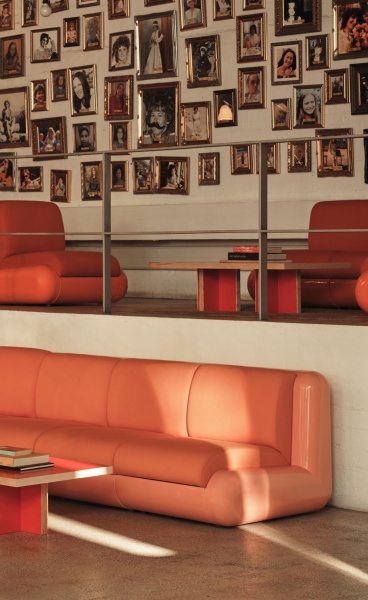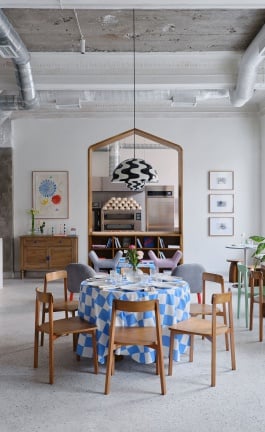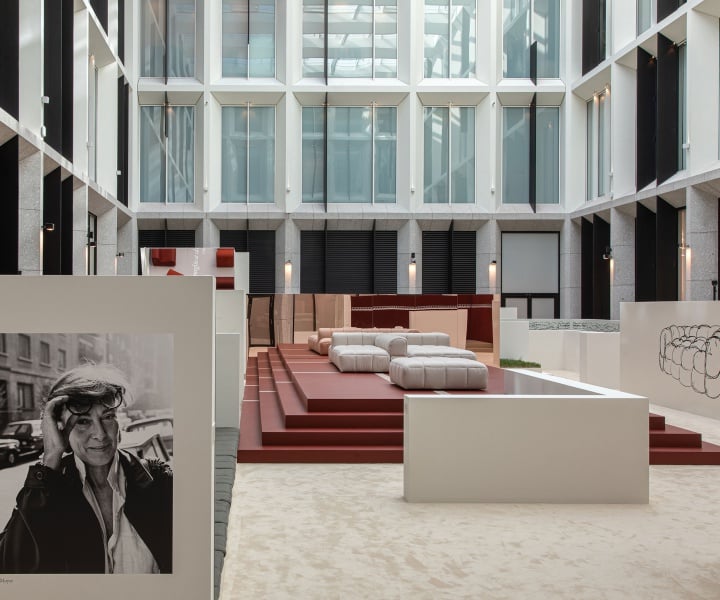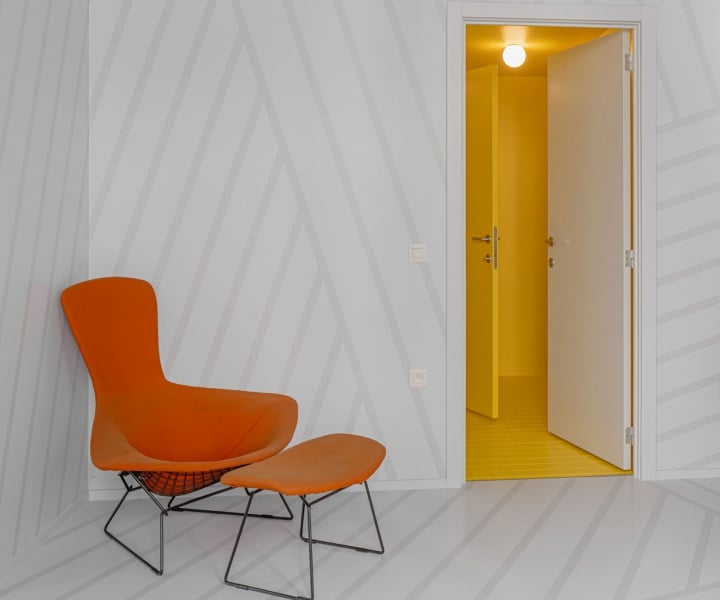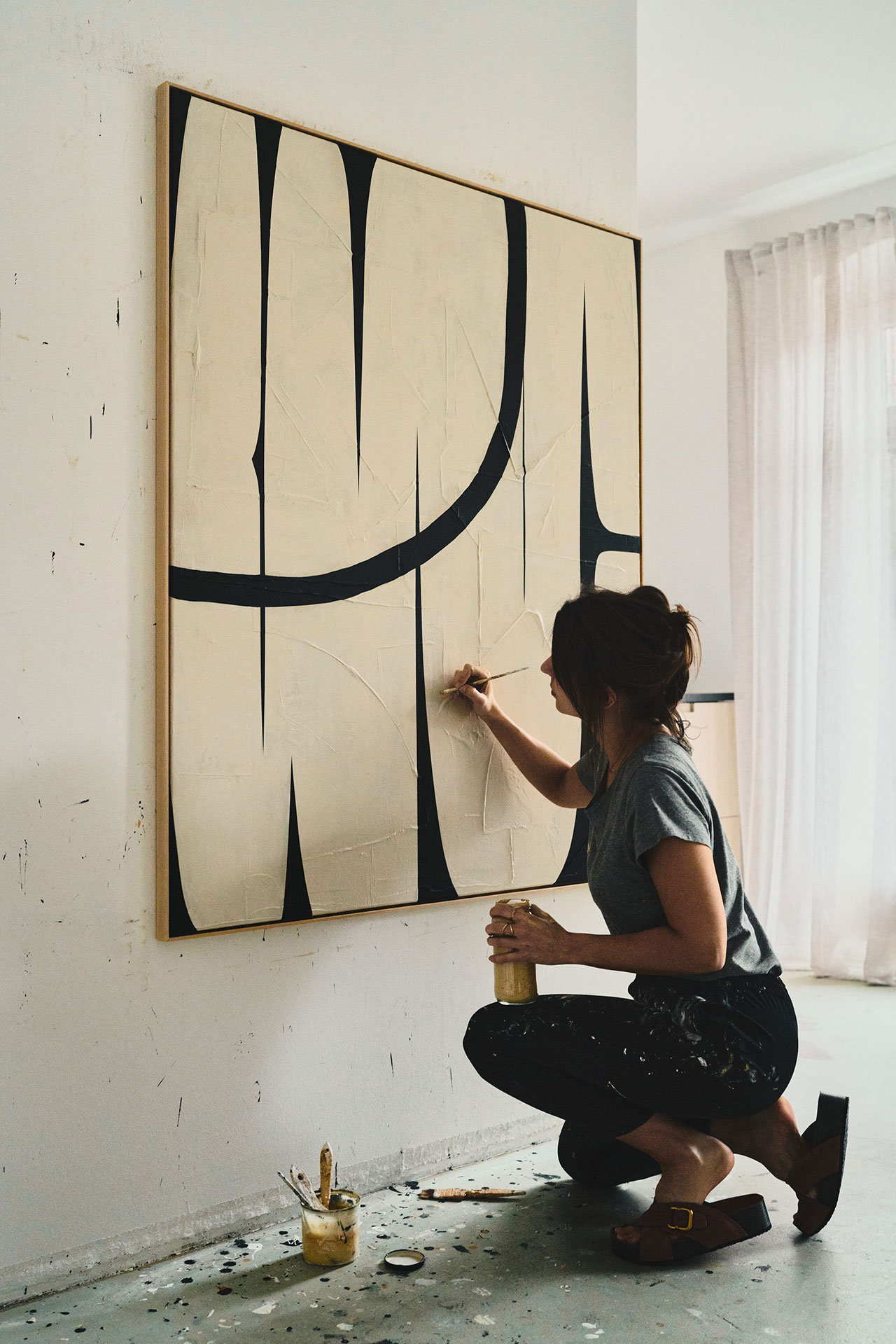
Photography by Tomo Yarmush.
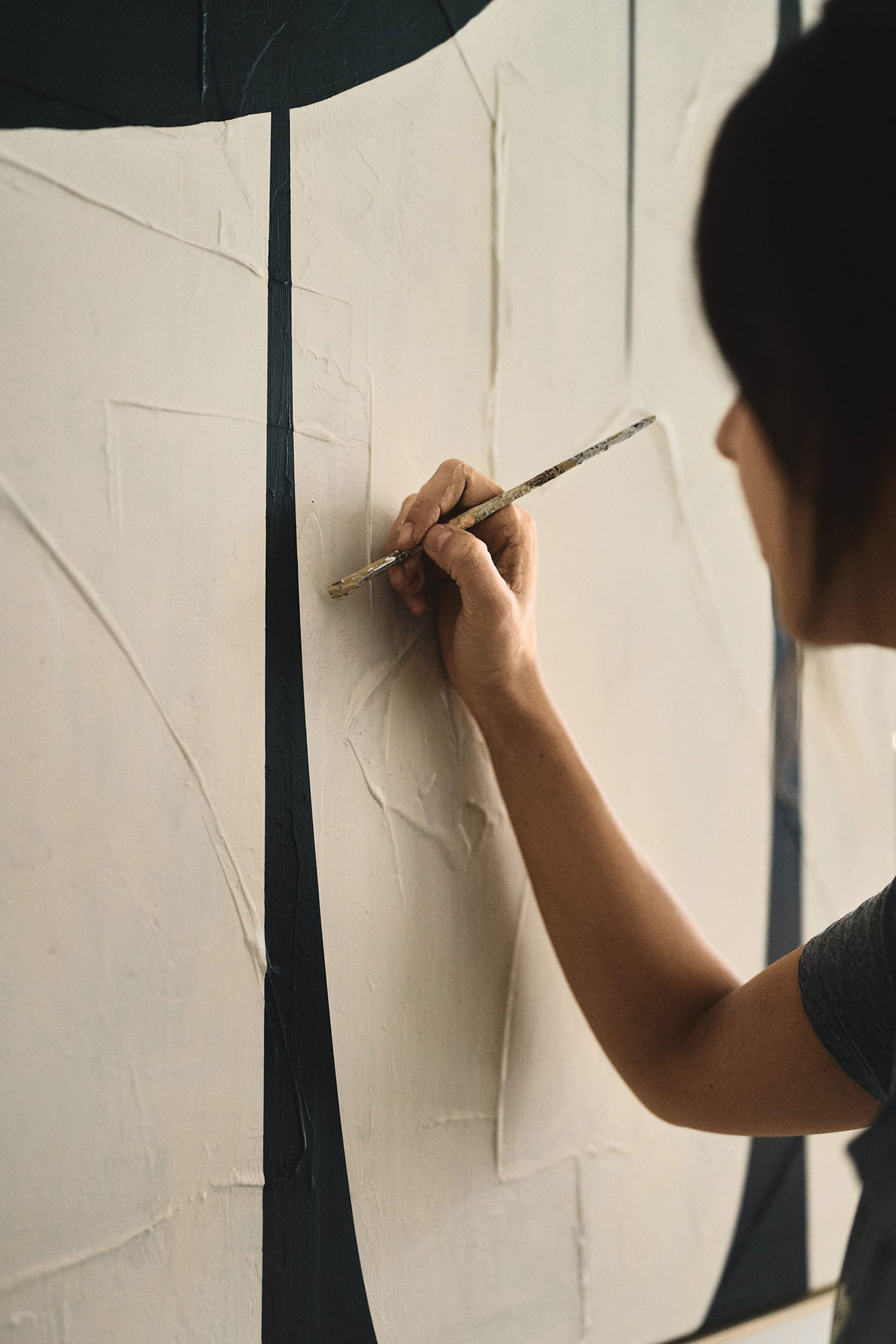
Photography by Tomo Yarmush.
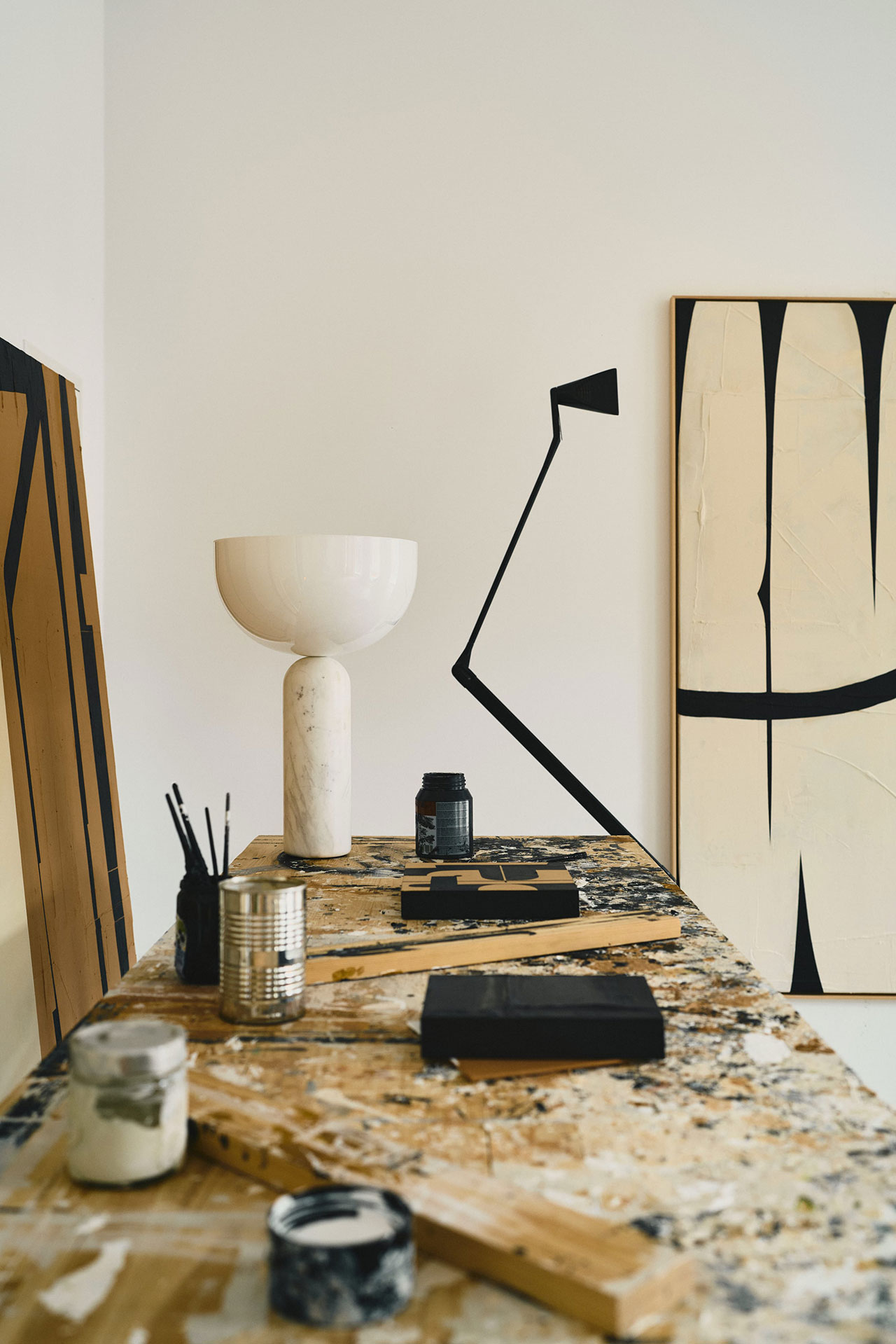
Photography by Tomo Yarmush.
Geometric abstraction is at the core of your painting practice. How did this graphical language evolve and how does it reflect you as an artist?
I've always loved geometric shapes, especially in architecture and design. I was never a fan of squiggles. The straightforwardness and clarity of geometry, its repetition – there has always been something very balanced, harmonious and neutral about it. It has a calming effect on me.
You use a limited colour palette of black, white and earth tones. Why? Is this an aesthetic or conceptual choice?
It’s difficult to describe in words. It's neither aesthetic nor conceptual. Although I personally find earth tones and neutral colours like white and black aesthetically pleasing, it’s more of an emotional choice. These colours have a calming effect on me; just like geometric shapes, they evoke a sense of permanence. In life, everything is constantly changing, but there are things that you want to hold on to, that are beautiful just as they are, for example a friendship that has lasted for decades, a place that you always like to return to or the love of your life.
Colours, on the other hand, have a different energy for me. They are dynamic, alive. That's nice, but it's not something I want to achieve with my art. This is something I realised early on, although, admittedly, I did experiment with colour a little at the beginning – one of my first paintings is actually pink and blue. It's now in the basement of my studio. One day I will paint over it.
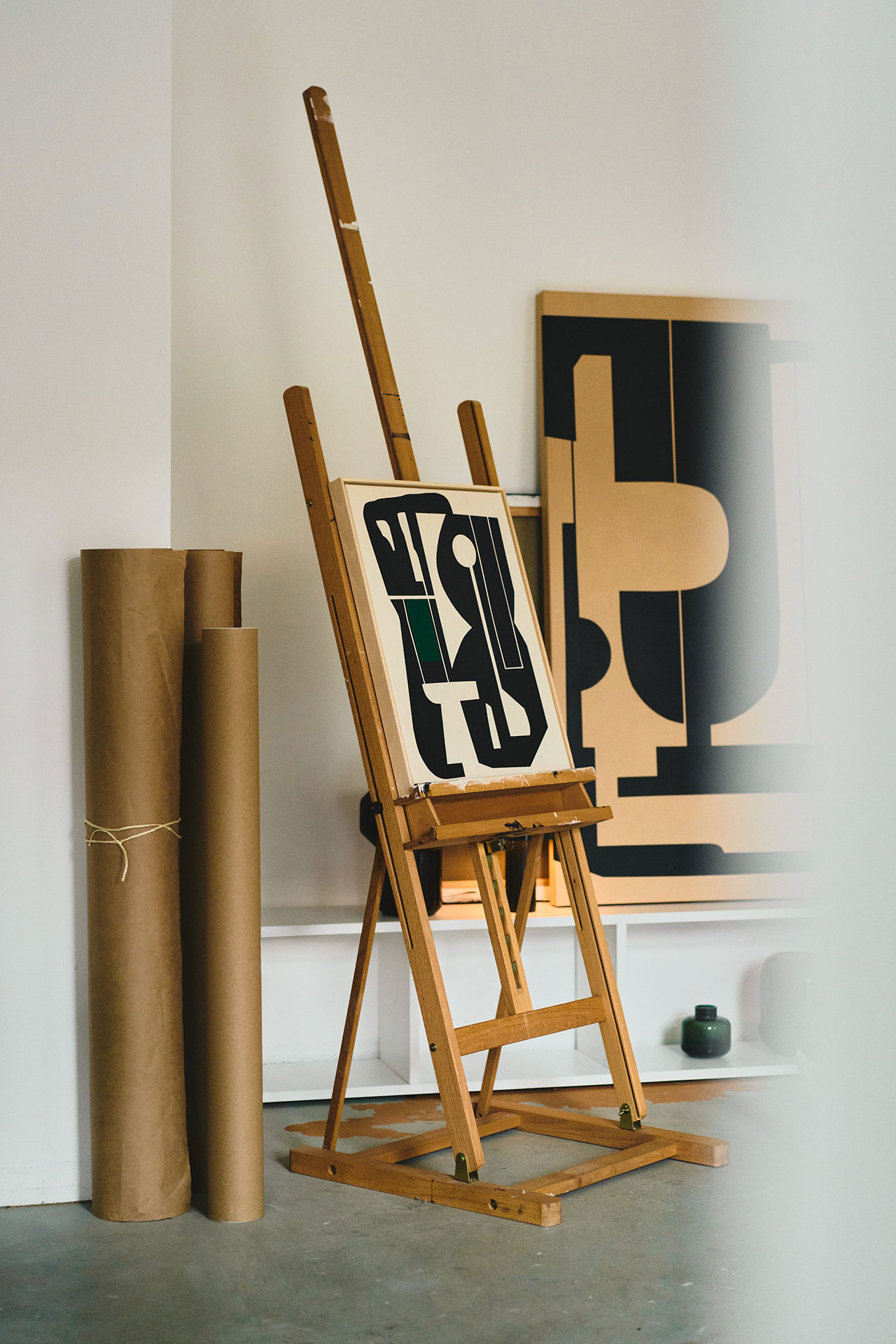
Photography by Tomo Yarmush.
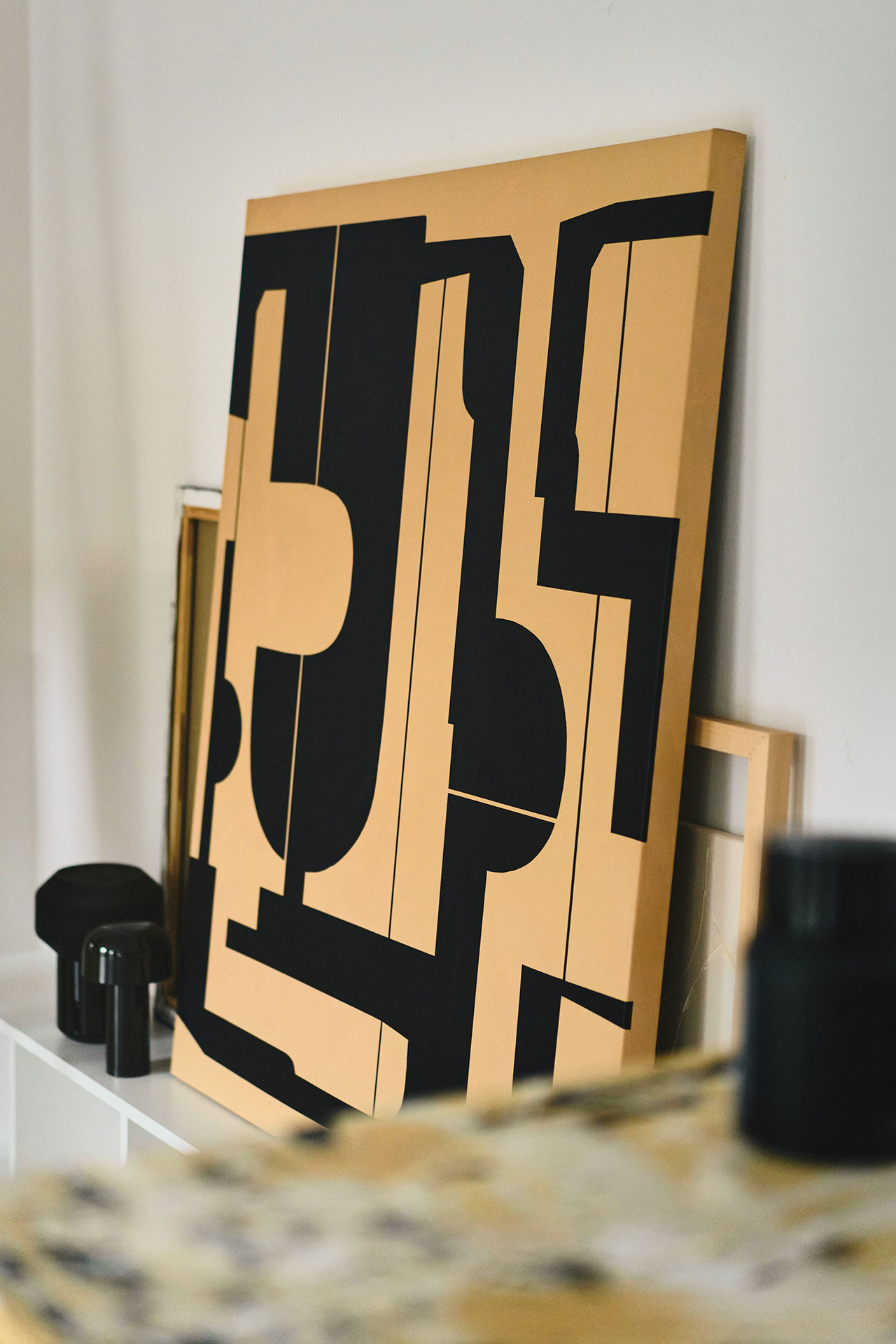
Photography by Tomo Yarmush.
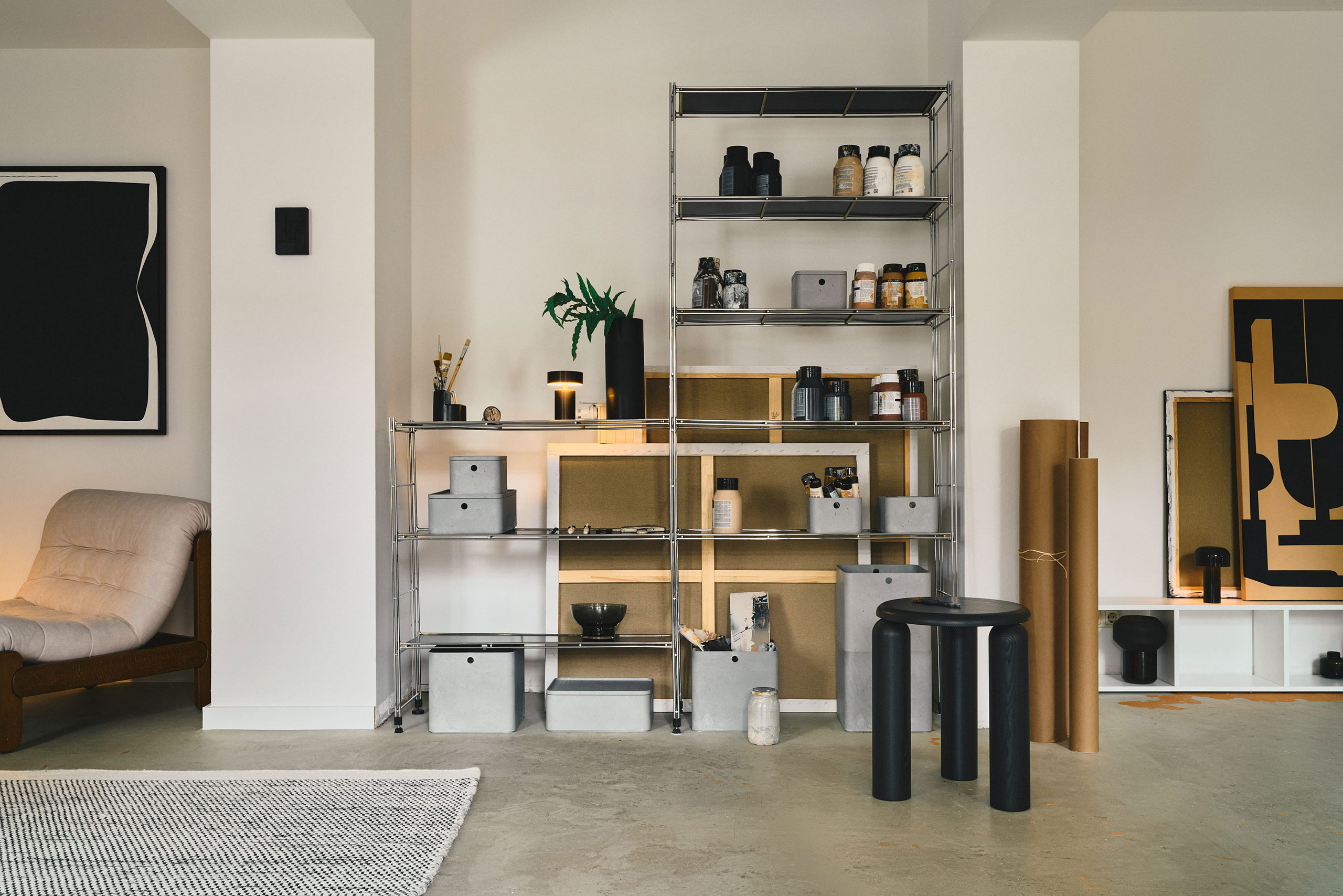
Photography by Tomo Yarmush.
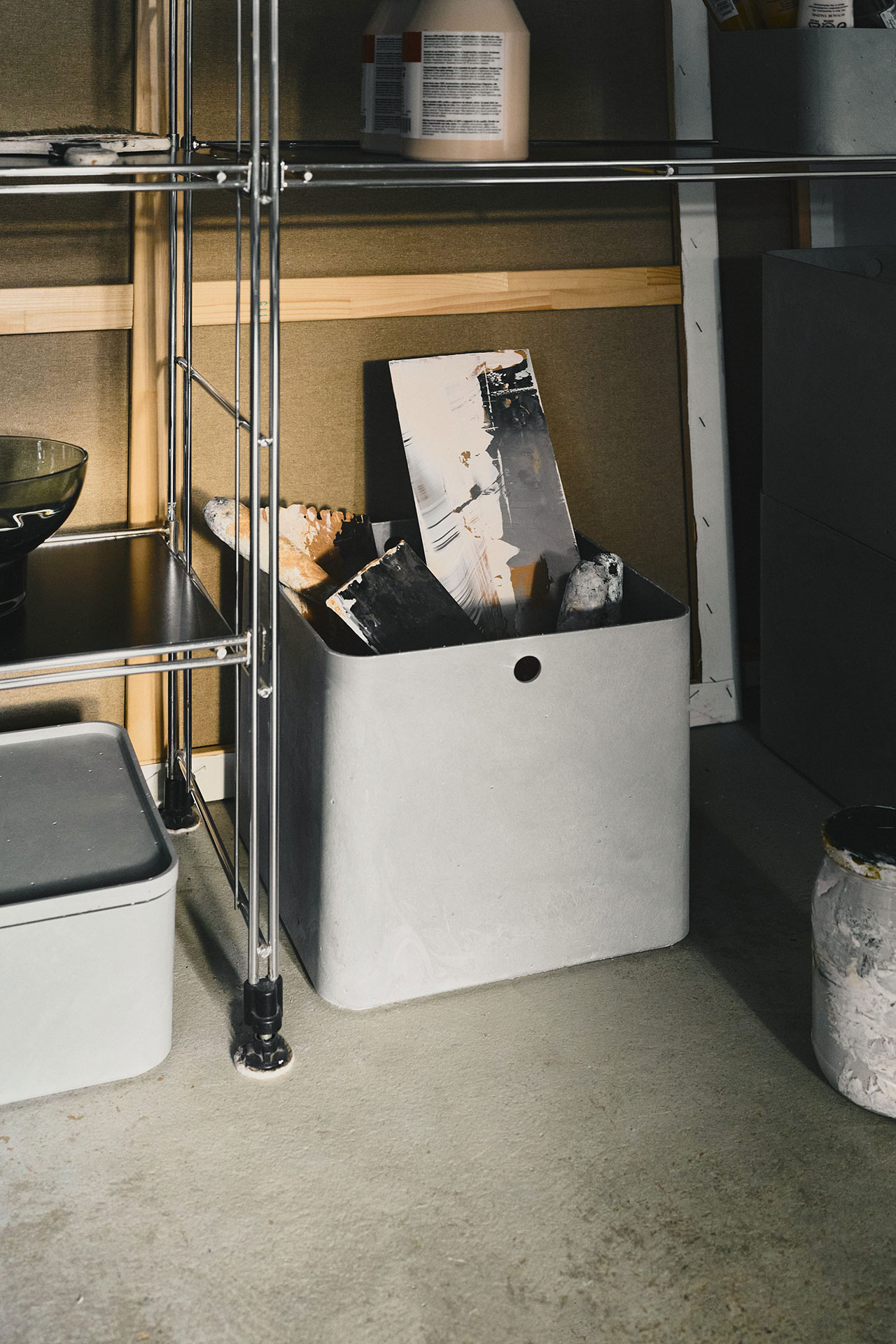
Photography by Tomo Yarmush.
There is a soothing, contemplative quality to your paintings. Is this something you purposefully aim for or is it a reflection of your artistic and personal sensibilities?
It’s not something I strive for intentionally, in the sense that I don’t consciously set myself the goal of achieving it. Rather, this is a feeling that comes out of me. I am only satisfied with my work when it feels both harmonious and neutral. It’s actually a compulsion: it’s not until I perceive an artwork to be harmonious and neutral that I consider it finished. This can take many days or even months, but sometimes the feeling comes very quickly and I know immediately what I need to change – I love these moments.
How important is the studio space you work in? What are the qualities you look for?
My studio is very important to me, it’s where I paint. With that being said, I only do my sketches at home – I probably subconsciously like this separation of planning and realisation.
When it comes to my studio, I like it to be quiet. While it's not that important to have everything organised – sometimes I trip over my paint buckets or other utensils – I need to have a corner that radiates peace and quiet. This is the cosier part of my studio where I photograph my work. The most important thing for me though is that I’m completely alone during the creative process. My studio is on the ground floor, naturally people often walk past it so I made a conscious decision not to display my name on the door to protect myself from curious passers-by. I’m not saying that I don’t like receiving guests, of course I do, just not spontaneously.
In general, I prefer it when the work doesn't evoke any associations in me, because having associations means having to analyse your mind. Ideally, I just want my artworks to make people feel, not think.
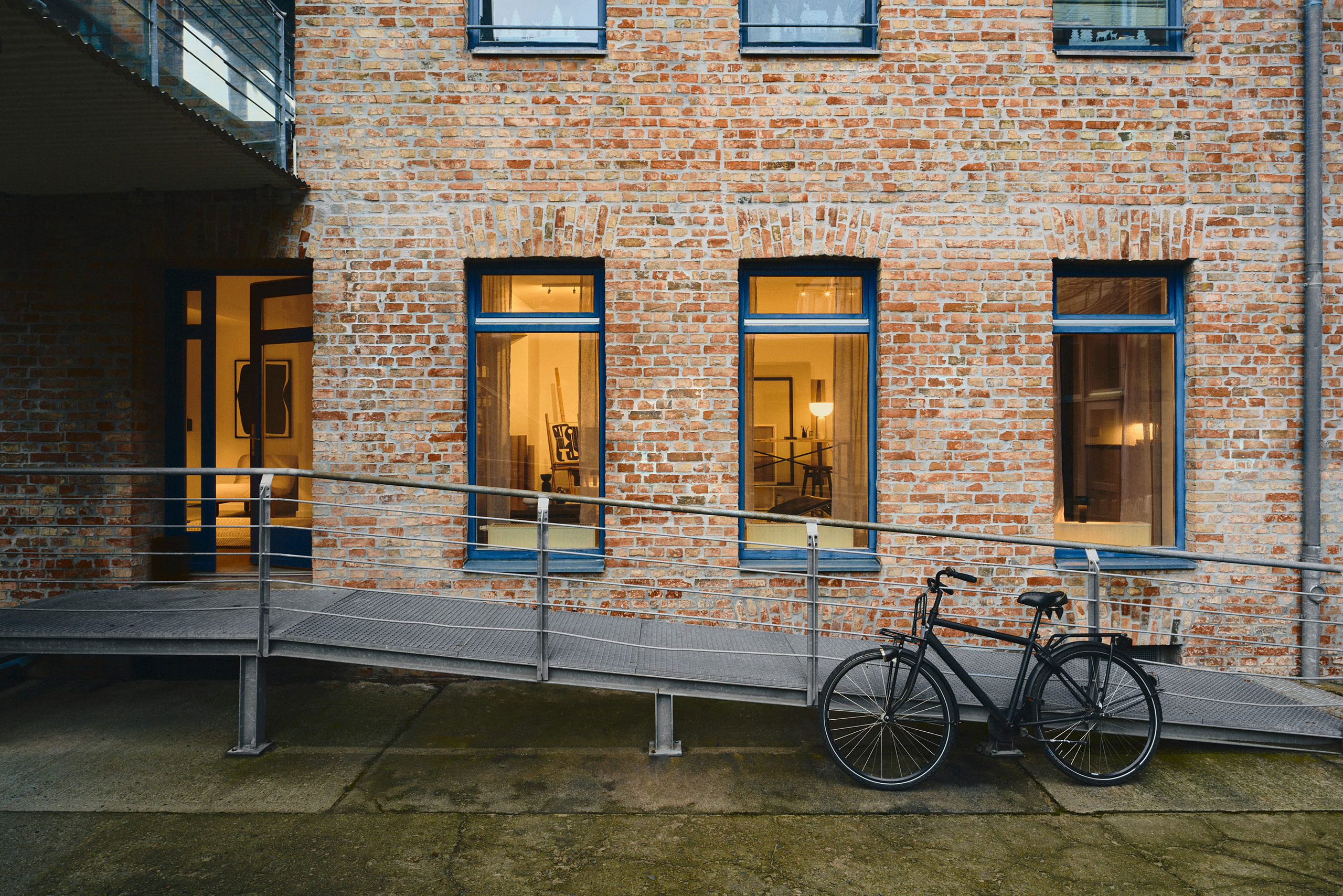
Photography by Tomo Yarmush.
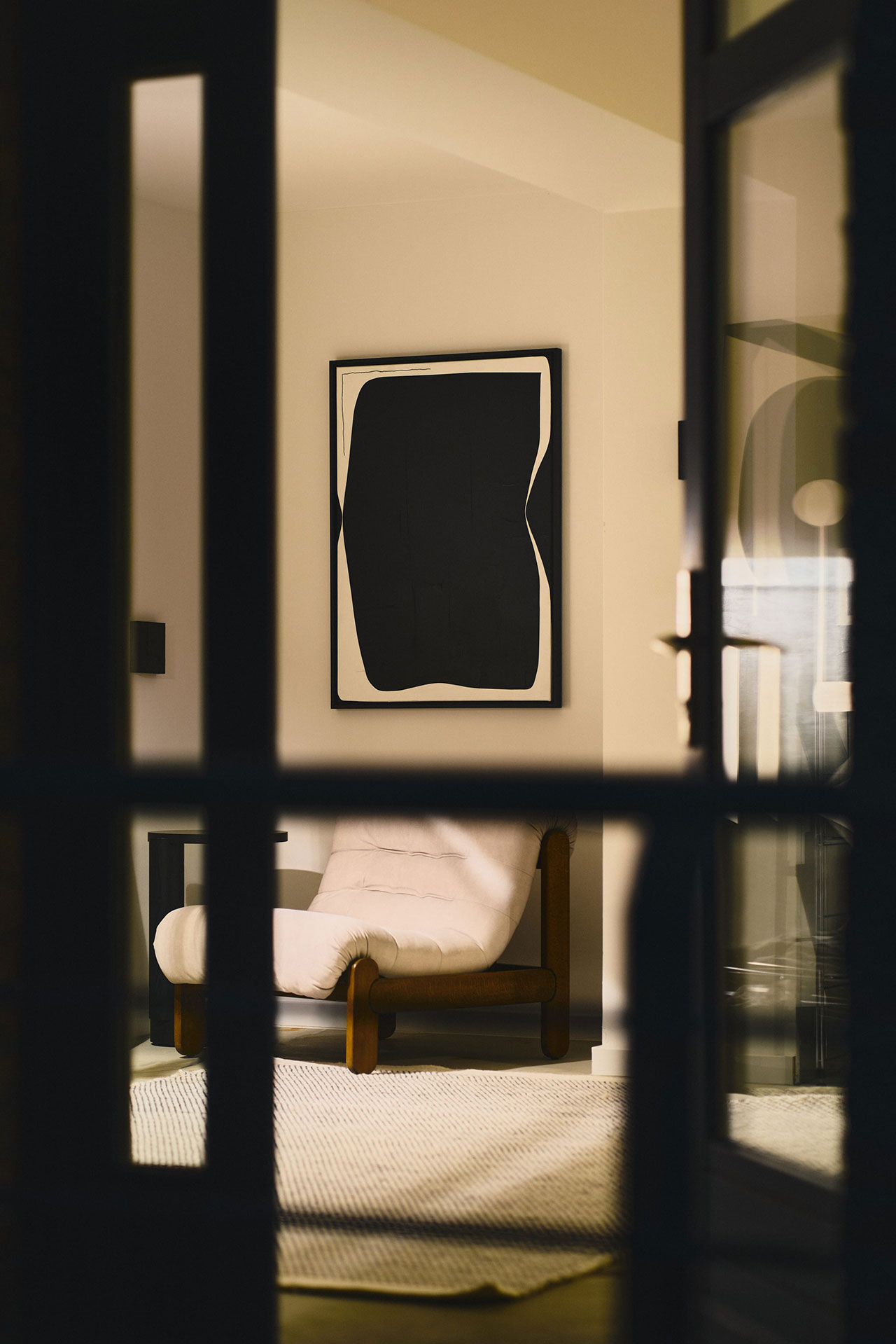
Photography by Tomo Yarmush.
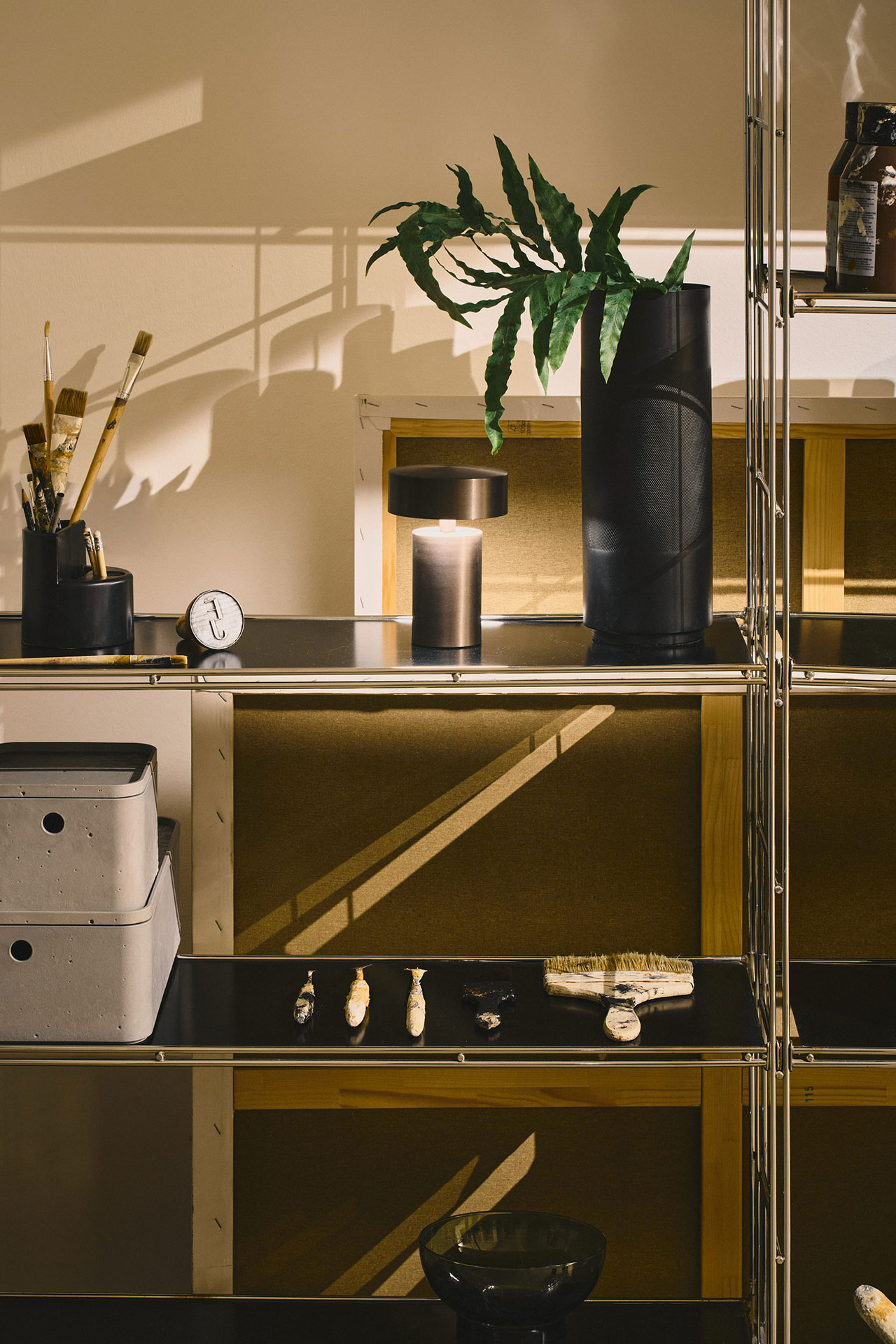
Photography by Tomo Yarmush.
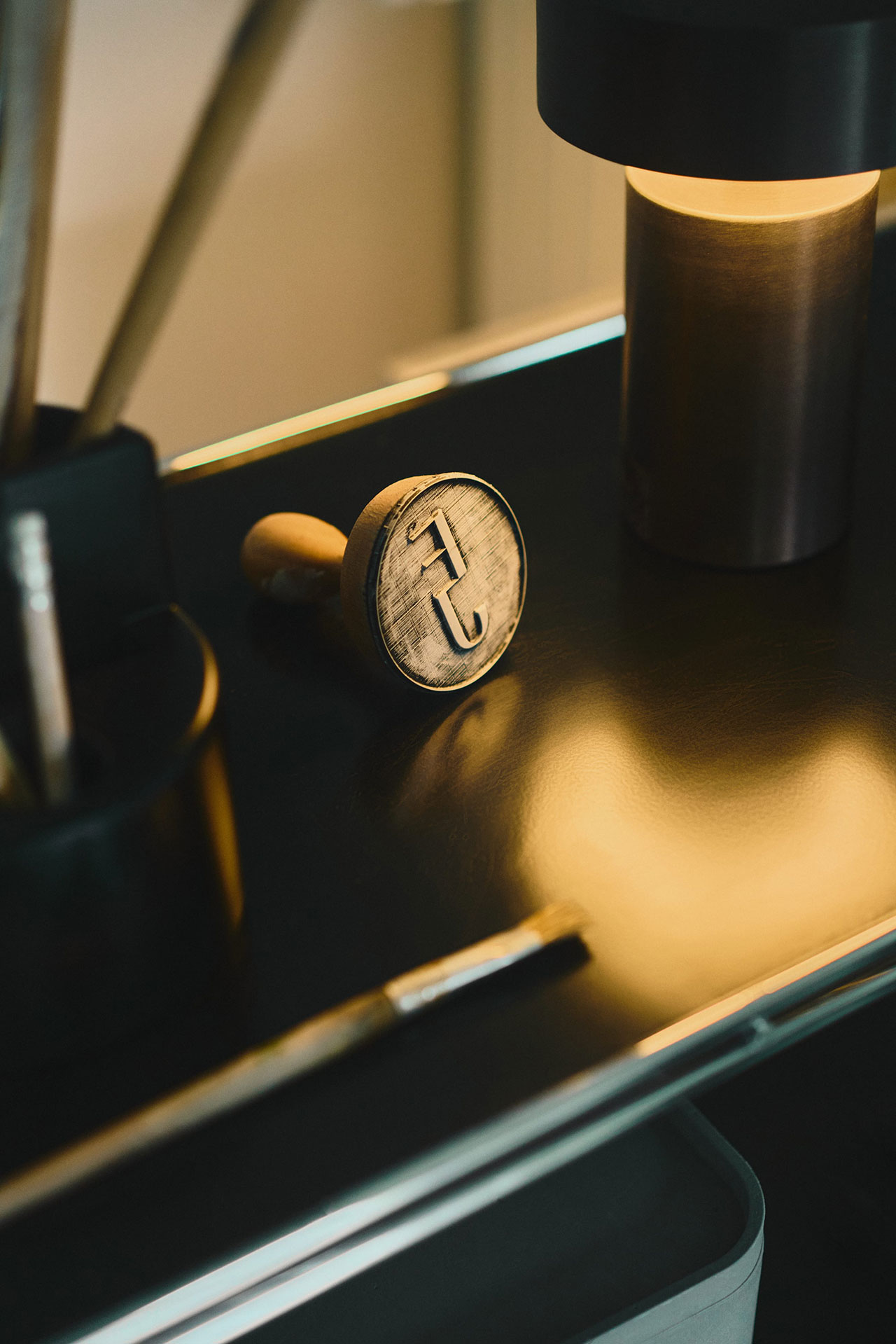
Photography by Tomo Yarmush.
Talk us through your work process. Do you draw preparatory sketches for your paintings? Is there room for spontaneity?
I plan and sketch my work very carefully in advance. I'm not good at spontaneously painting – I should probably practise it more often, but I don't particularly like spontaneity, at least not for important things, which is what my work is for me. Nevertheless, I allow a small space for spontaneity and sometimes while painting a form emerges that is different from the one I sketched. I like that feeling, it's as if the work surprises me.
Where do you draw inspiration from? Which artists have influenced your practice?
I try to avoid seeking inspiration from other artists because I don't want to be unconsciously influenced by them. It's not that I don't appreciate them. There are many artists I admire, but I try to keep my mind clear of them. When I do happen to be inspired by something, usually by architecture or everyday objects, it’s unconscious. The inspiration is often very abstract, for example the proportions of a building, the outline of a blouse hanging on a line outside to dry or simply a shadow cast by an object.
You often showcase your paintings on your Instagram account amid carefully curated interiors. What is the purpose behind showcasing your work in this way?
I have a great weakness for interiors. If I hadn't become an artist, I might have become an interior designer, architect or interior photographer. I think art belongs in homes. In my eyes, one of art’s great tasks is to enrich our homes. That's why I present my work in living spaces. They simply belong together, just like good food and beautiful tableware. I really love the fact that my art finds its way into beautiful interiors.
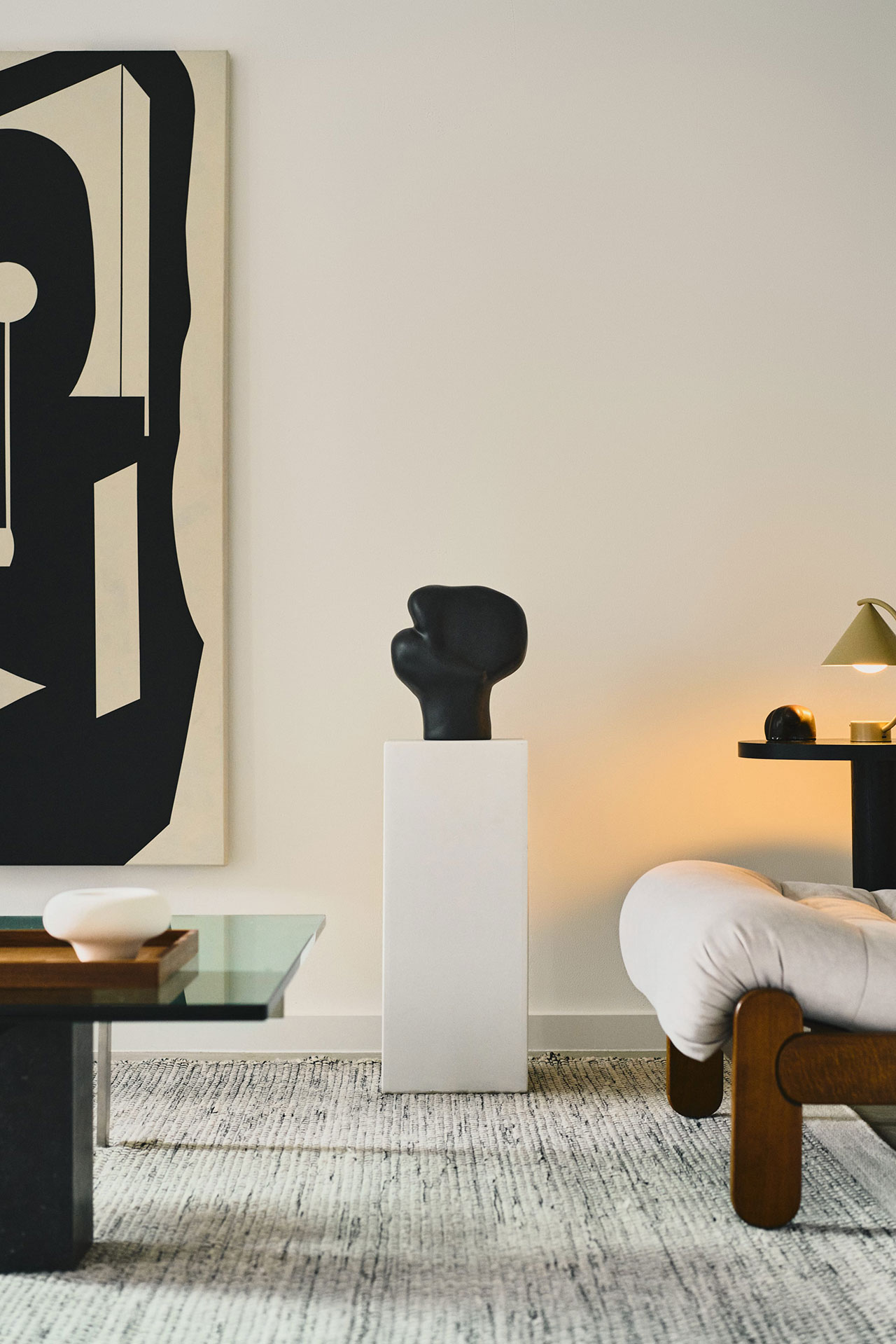
Photography by Tomo Yarmush.
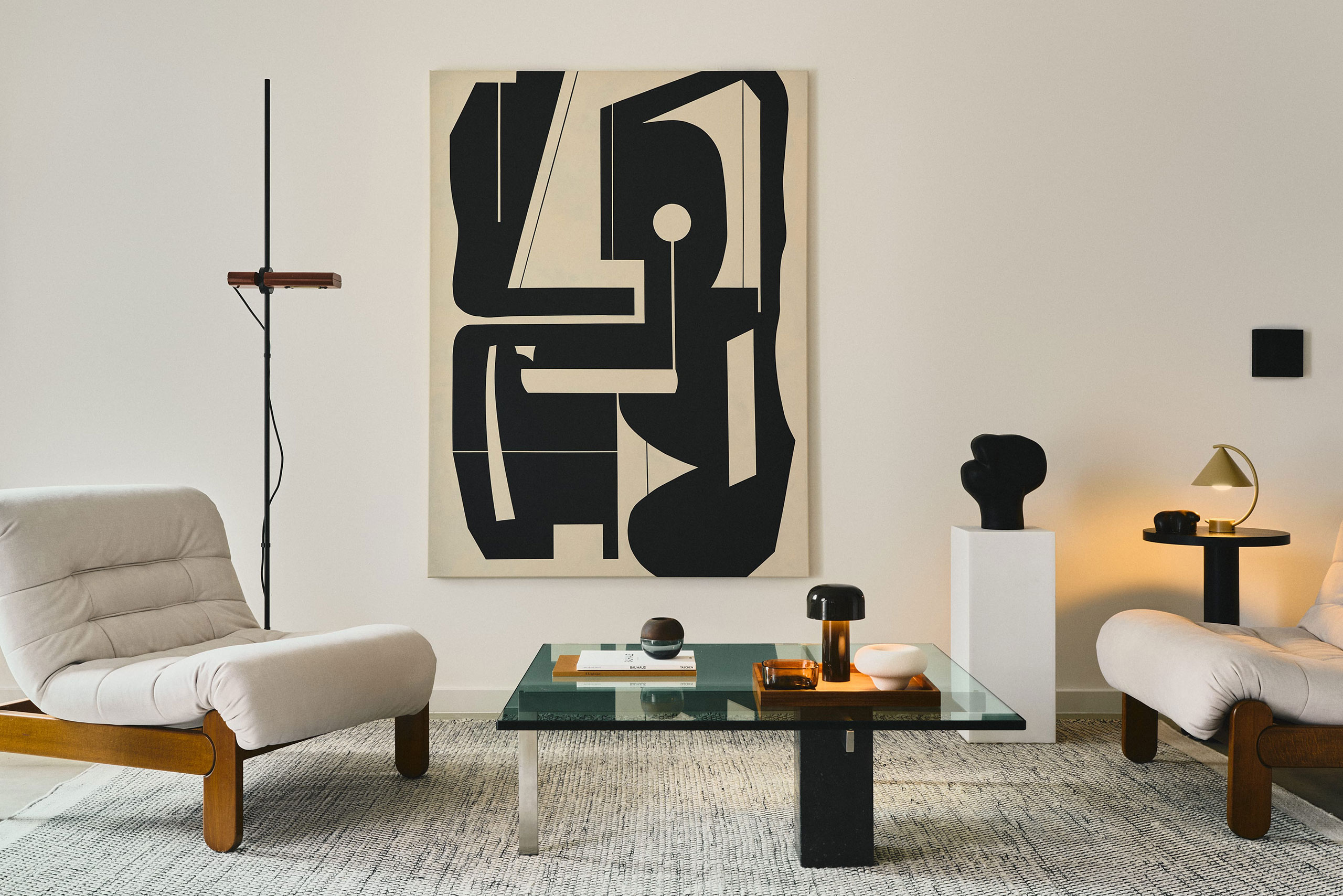
Photography by Tomo Yarmush.
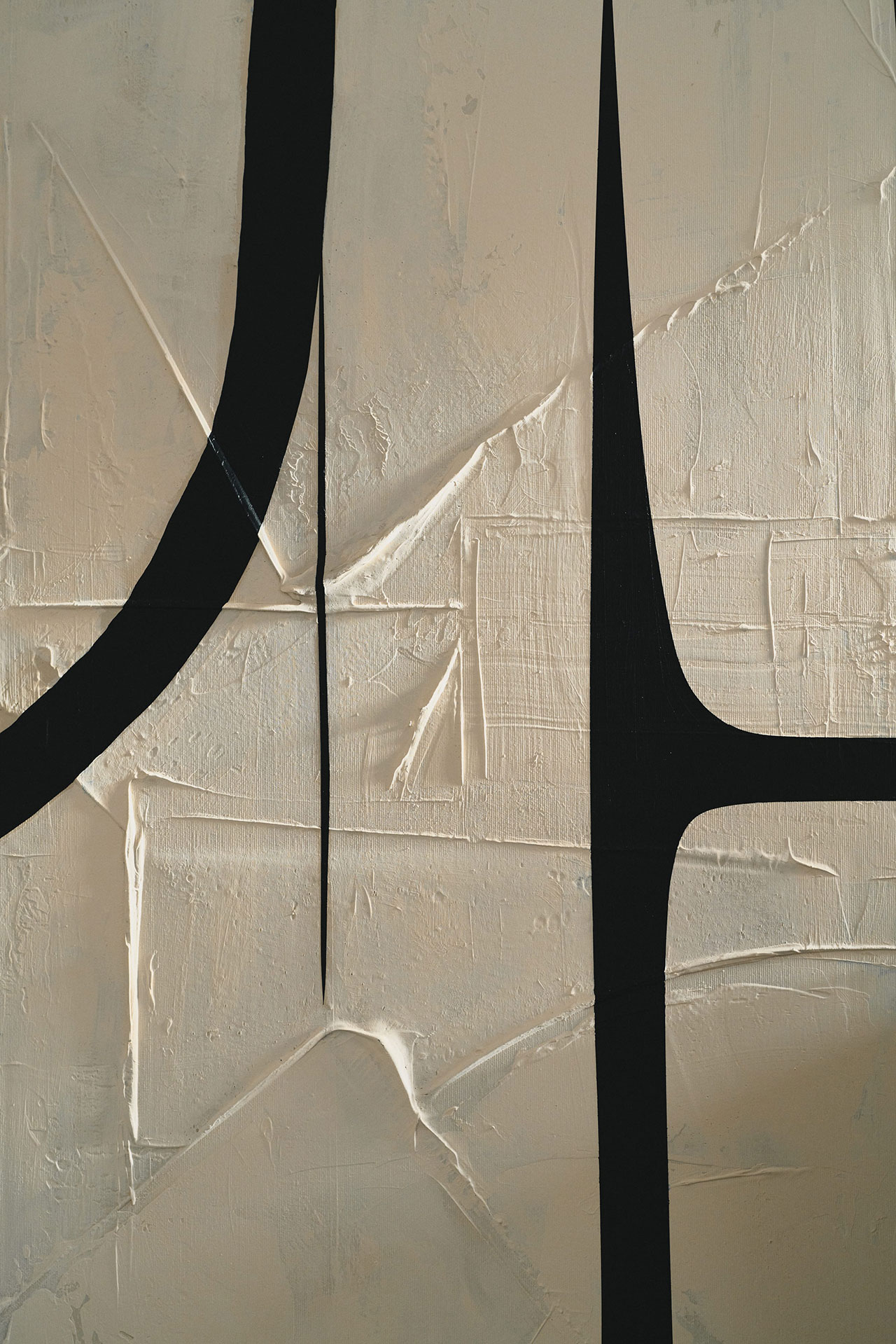
Photography by Tomo Yarmush.
What part does art play in interior design in your view? Where do the two disciplines meet?
Art can play many roles in interior design. For some, it’s an investment, a cultural asset. For others, however, the financial value of the art plays no role and it’s more about the emotions that the work of art evokes in them. In both cases, however, people are looking for a feeling. They buy a certain feeling for their home. So for me, art is something that gives the viewer and the owner a certain feeling.
The feeling that I personally want to evoke with my art is neutrality, harmony and consistency. A home should be exactly that for me personally which is where art and architecture come together. They give us the opportunity to express ourselves, to create a home that is a reflection of who we are as well as make us feel safe and comfortable.
What are you working on right now and what are your plans for your next exhibition?
I am currently working on some pieces for the next campaign for a big Italian furniture manufacturer that I have previously collaborated with. I am also working on a personal project, a large work of almost two by three metres. Normally I only do paintings of this size as commissions, but I wanted to let off steam on this large surface.
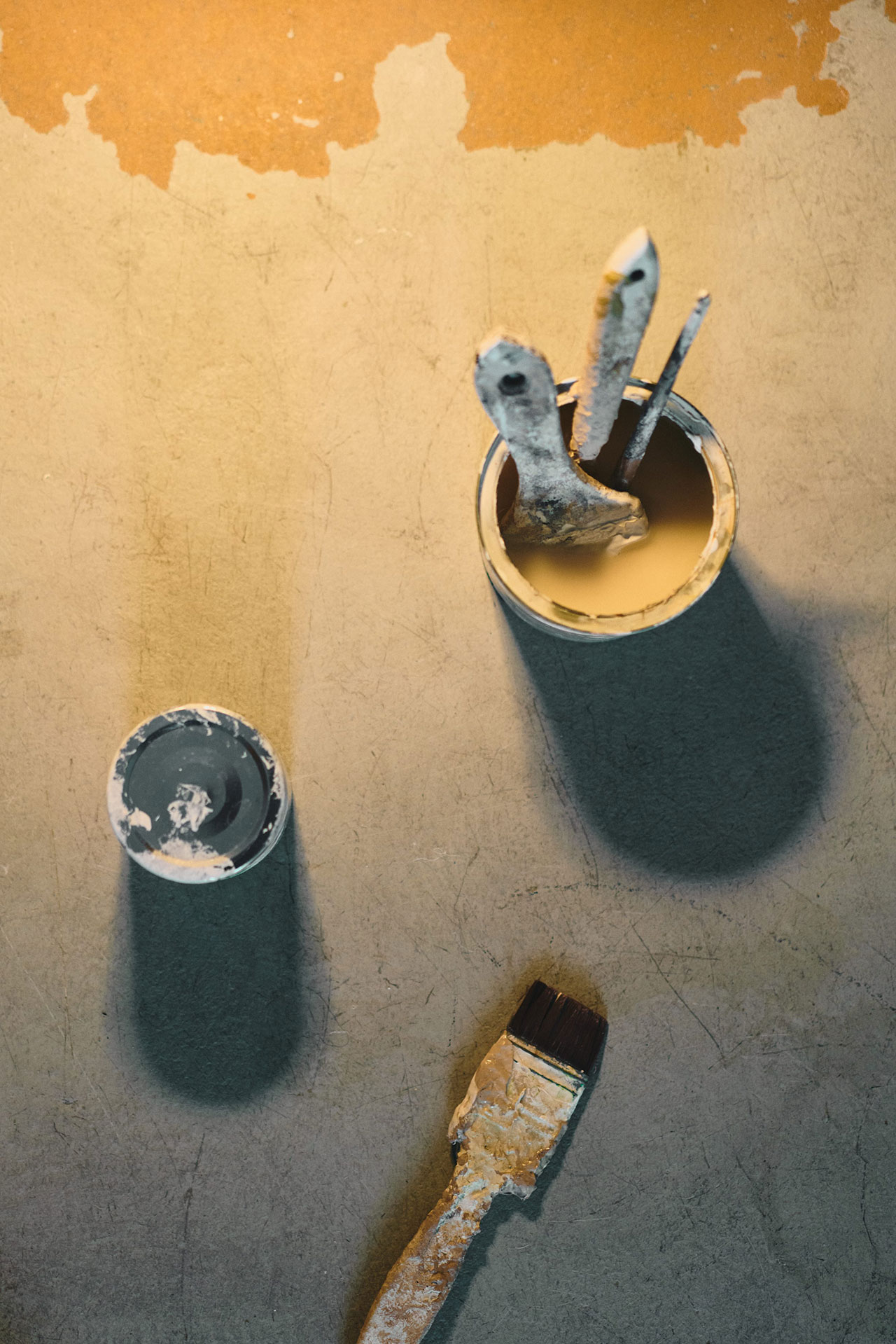
Photography by Tomo Yarmush.
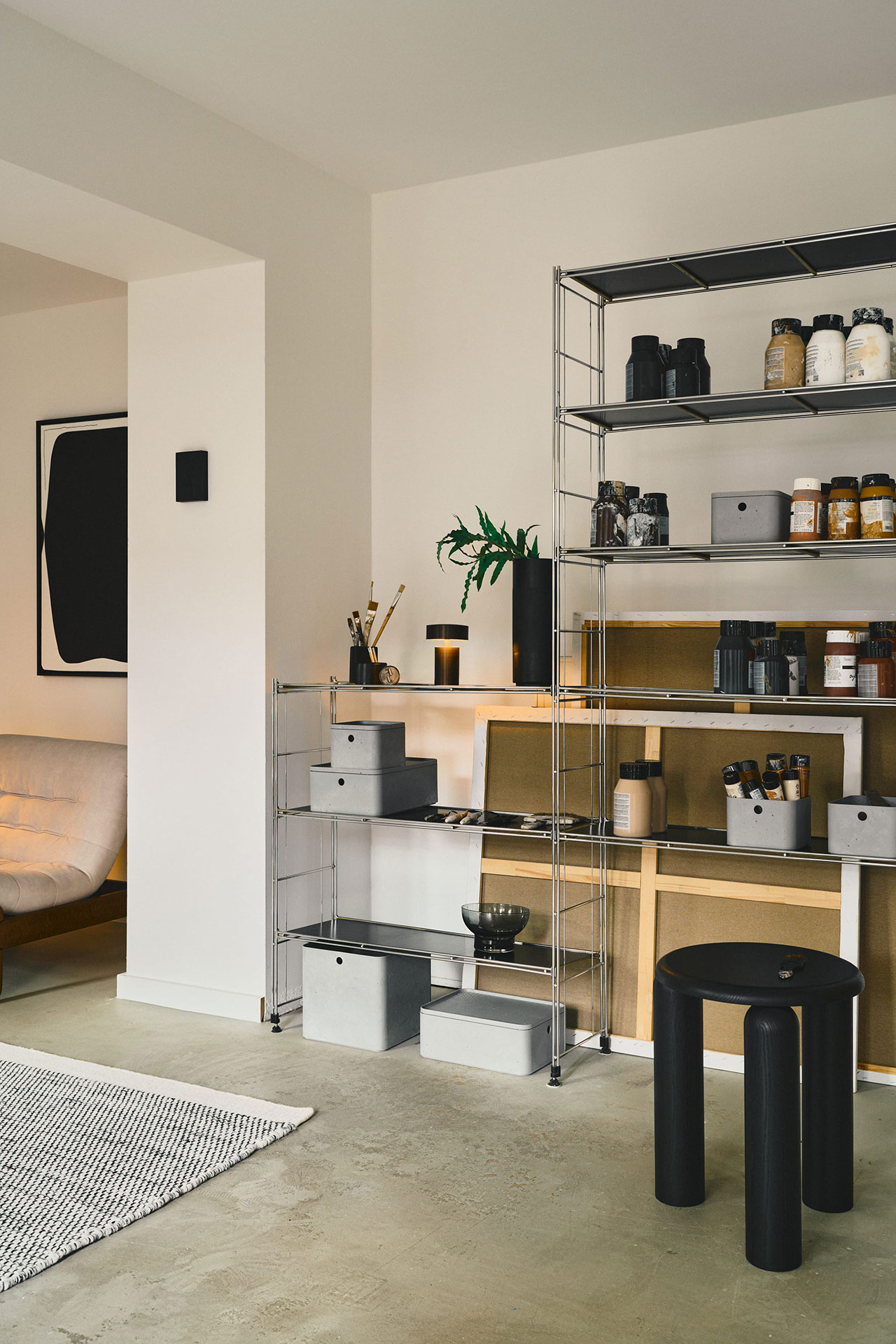
Photography by Tomo Yarmush.
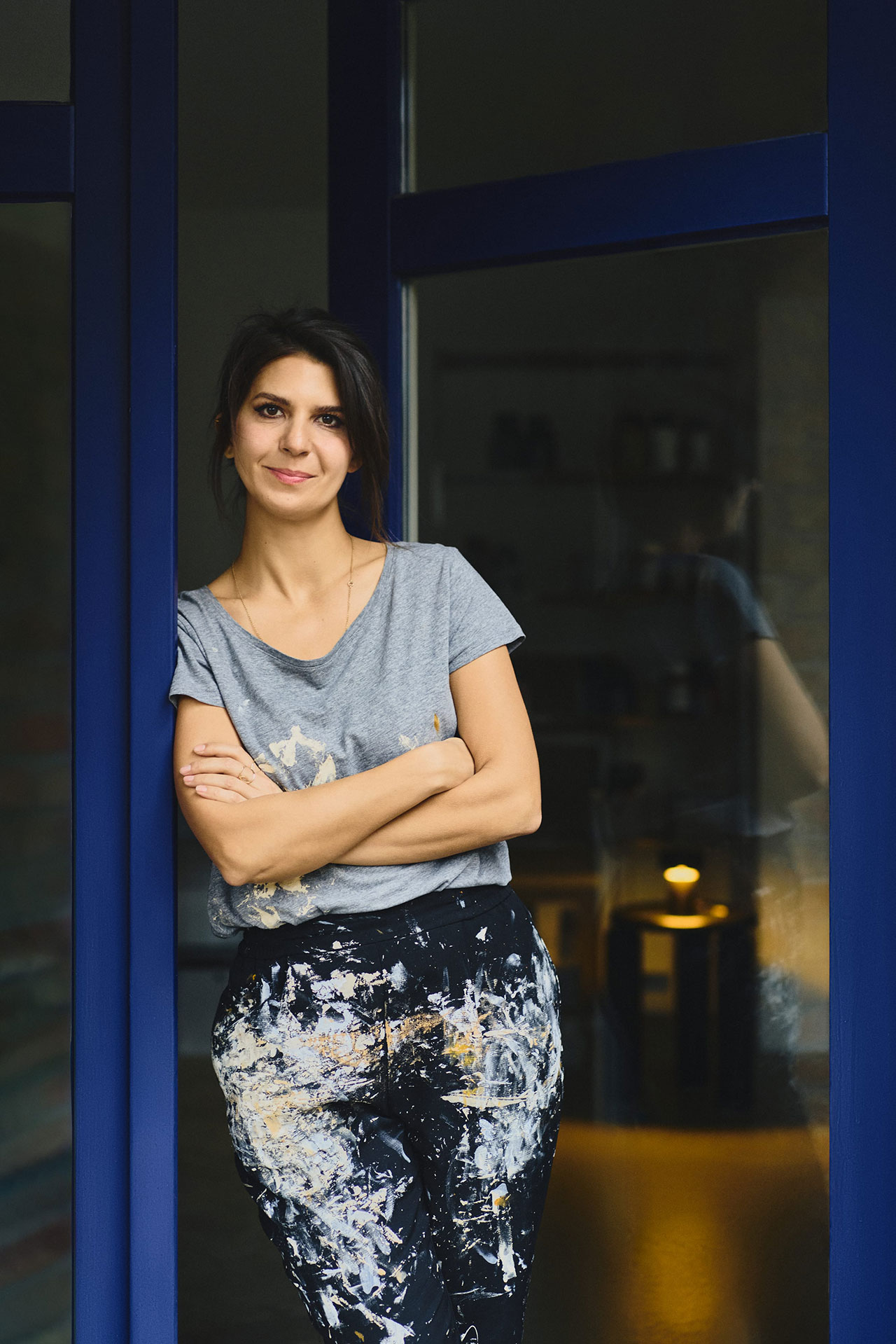
Portrait of Eva Jablonsky.
Photography by Tomo Yarmush.



